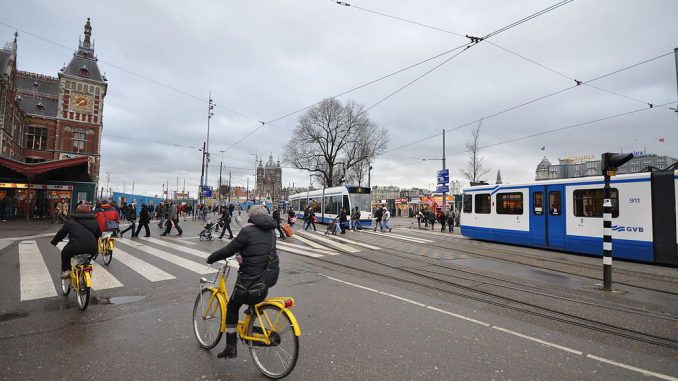
DCA blog by Samuel Nello-Deakin Department of Geography, Planning and International Development, University of Amsterdam
The vast majority of cycling researchers have at least one thing in common: they enjoy riding their bicycle. Although this shared passion for cycling is key to the vitality of cycling research, it can also lead us to fall into what we might call the “cycling fallacy”: in other words, thinking that what really matters for promoting and understanding cycling is cycling itself. The increasingly popular notion of bicycle-oriented development (BOD) illustrates this form of thinking: if we want to encourage cycling, what we need is to plan a city which is perfectly attuned to cyclists’ needs and desires. This outlook clearly translates into a research agenda focusing on cycling itself: on the role of built environment variables and cycling infrastructure in fostering cycling, on cyclists’ attitudes, perceptions, and preferences, on cyclist route choices, on the effect of socioeconomic variables on cycling, etc.
Contrarily to this received wisdom, however, we might consider an alternative proposition; namely, that the most effective way of furthering cycling is not to specifically plan for cycling, but rather to strongly discourage – or even prevent – the use of other forms of transport. Let us consider the following thought experiment. Take a medium or large city in Europe – anywhere from to Aberdeen to Zagreb – and mentally expose it to an abrupt energy shortage which brings all cars and public transport to a halt. Imagine this situation is prolonged indefinitely, months slowly transforming into years. Under the new situation, cycling and walking become the only available transport options for the vast majority of urban trips. Initially, there would be an enormous mismatch between people’s mobility needs and the transport options available to them. As people gradually came to accept the irreversibility of the situation, however, patterns of activity and development would slowly but surely adapt to the new reality. In all likelihood, the end result would be much closer to the ideal of BOD than if we had planned specifically for cycling. This may be a hyperbolic example, but it illustrates an important point: it is not only the urban environment which produces cycling, but also cycling which produces an urban environment in its own image.
The question, then, is how to reach a point where the critical mass of cyclists is enough to be a significant force in shaping the city. Since the choice to cycle or not is largely dependent on the relative availability of other transport options, the straightforward but politically unviable answer is simply to make life difficult for other forms of transport. Of course, this statement needs to be nuanced: the relation between cycling and other forms of transport can be complementary as well as competitive. In the case of regional public transport, the promotion of intermodality with cycling can play a crucial role in increasing cycling numbers.
This sort of reasoning may be excessively simplistic, but it highlights the fundamentally relational nature of the interactions between cycling and other transport modes. For cycling researchers, understanding how cycling environments overlap, compete and cooperate with other transport environments continues to be a largely pending challenge. Providing answers on this topic requires the willingness to ask some crucial but potentially uncomfortable questions. For instance, to what extent does investment in high quality public transport discourage cycling, and if this is the case, which of these two objectives should we prioritise? In historic city centres where space is scarce, how do we deal with the trade-offs between providing for pedestrians and cyclists? These sort of dilemmas have no easy answer: whichever solution we choose will inevitably have strong implications and trade-offs in terms of spatial and social equity. In what often seems to be a frenzied and media-dominated public debate, however, cycling research can – and should – help us understand the implications of prioritising one transport mode over another, as well as expose the existing inequalities in the use of space between different transport modes.
Last but not least, focusing on cycling’s relationship with other transport modes rather than on cycling itself also highlights the limits of pro-cycling strategies in the absence of systemic change towards sustainable urban mobility. In cycling cities like Amsterdam and Copenhagen, cycling appears to be close to its reaching its “environmental limit” within the current urban paradigm. The introduction of smart technologies (e.g. dockless bikesharing, e-bikes, smart traffic lights) and improvements in train-bike integration might increase cycling rates a little further, but it seems unlikely that a step change in cycling levels can occur without radical changes to the urban transport system. Cycling can do a lot to make our cities more sustainable, livable, healthier and friendlier, but it cannot save them single-handedly.
